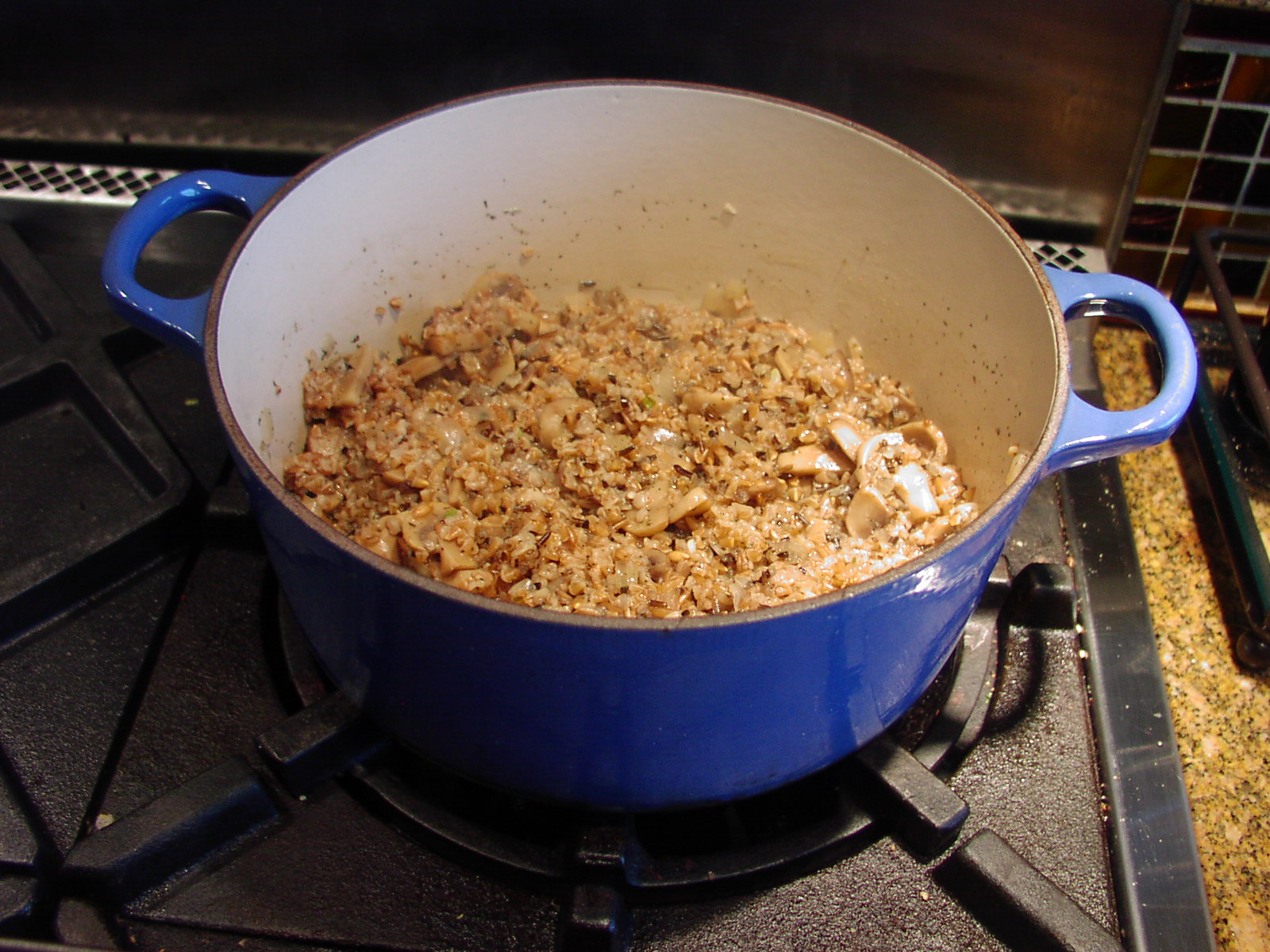 I found this recipe on the Bluebird Grains Potlatch Pilaf package. (Say that three times in a row for your daily tongue twister teaser!) Anyway, like I started to say, I found and prepared this dish (made a few minor changes here and there), loved it, and I am very excited to share the recipe with you.
I found this recipe on the Bluebird Grains Potlatch Pilaf package. (Say that three times in a row for your daily tongue twister teaser!) Anyway, like I started to say, I found and prepared this dish (made a few minor changes here and there), loved it, and I am very excited to share the recipe with you.
Now I know that some of you are not in the habit of buying packages of grain and grass seed* except for the ones found in the bird-food section of your grocery store. But I’m going to ask you to put on your big kid pants, conquer your fear of growing feathers and wanting to fly south for the winter, and give this organic, healthy, protein rich, and GMO-free product a try. Plus, for all you locavores**, the farro is grown in the upper Methow Valley of Eastern Washington. (That’s local enough for this locavore!) The organic wild rice unfortunately is not grown locally. But I’m sure that doesn’t surprise you one little bit since Washington isn’t known for its wild rice production. (We leave that distinction to Minnesota, the land of 15,000 lakes.)
So, regardless of where the grains were raised, and despite the fact that we don’t really know whether the grains were lovingly tended and exposed to classical music as they were growing up***, all of us could profit from a few more healthy grains like farro and wild rice in our diet. So, fly to your local grocery store (and I mean “fly” figuratively rather than literally), and bring home a grain or two with which you are completely unacquainted. Then give it or them a try. You are going to find that the likes of quinoa, red rice, farro, and wild rice are just delicious. And I can’t overemphasize their nutritional value. Oh I could, but I think I have already nagged said enough on that subject!
For more recipes that feature farro, type “farro” in the search field at the top of the “home” screen.
*wild rice is a highly nutritious annual water-grass seed “zizania aquatica” naturally abundant in the cold rivers and lakes of Minnesota and Canada
**the practice of eating food that is locally grown
***my not too subtle dig directed at the kind of people who carry their need for information on food ingredients and growing conditions to the ridiculous
- 2 T. extra virgin olive oil
- 10 button mushrooms, halved and then thinly sliced
- ¼ c. chopped shallot or onion
- 1 lg. garlic clove, minced
- ¼ tsp. kosher salt
- freshly ground black pepper
- 1 tsp. Herbs de Provence (preferably without lavender)
- 1 c. Bluebird Grains Farm’s Potlatch Pilaf (or ¾ cup farro and ¼ c. wild rice)
- ¼ c. dry sherry or dry white wine
- 2 c. vegetable or chicken broth
- 1/3 c. toasted slivered almonds
In a medium sized covered saucepan, heat the olive oil. Add mushrooms, stirring occasionally until the mushrooms start to brown. Add the chopped shallot and cook for about 3 minutes. Add the garlic and cook for about a minute or until the garlic releases its aroma. Stir in salt, pepper, Herbs de Provence, and the Potlatch Pilaf mix. Stir frequently for about 3 minutes. Add the sherry and cook for about a minute, or until the sherry is evaporated. Pour in the broth, bring to a vigorous simmer, reduce heat, cover, and simmer for 40 minutes. Remove from heat and let stand for about 10 minutes. Fluff with a fork and stir in the toasted almonds just before serving.
